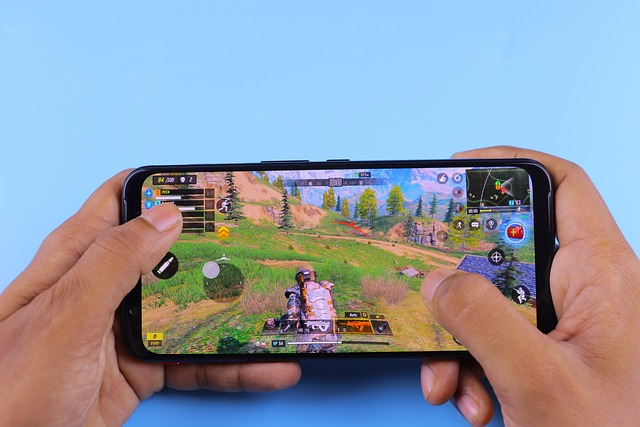INTRODUCTION
If one takes a glimpse at the current market for mobile applications by category, one will see that gaming apps have taken a significant market share. The popularity of gaming applications may vary from place to country, but it never changes. Before consoles and PCs, mobile gaming had the most revenue in 2021. Globally, there were 1.7 billion mobile gamers as of 2021, but by 2025, that number is expected to rise to 2.2 billion. Revenues from the mobile gaming market are predicted to rise from 109 billion to 160.6 billion dollars over the same period, reflecting the business’s expanding user base. Such can motivate you towards gaming app testing if you’re a mobile app developer. It’s crucial to comprehend the difficulties one can run into before doing something. Game elements must be tested on various device viewports and(/or) devices while testing mobile gaming applications or a game-testing platform. One might stumble upon issues that traditional game testing fails to address. Automated gaming testing aims to increase the mobile game’s stability, dependability, scalability, and security.
SOUTH ASIAN MOBILE GAMES FROM 2017-2026
MAJOR OBSTACLES ONE FACES WHILE TESTING ARE AS FOLLOWS:
- The need to prioritize real devices: Testers must choose an appropriate game-testing platform. It’s critical to realize that mobile games and other types of mobile applications differ significantly. For instance, compared to mobile games, an e-commerce application won’t be as CPU or GPU-intensive (regardless of its sophistication).
One of the most significant elements of any mobile game is its graphics and speed. Because of this, games need to be evaluated on actual devices. According to the load, real devices would throttle the CPU and(/or) GPU frequency. As a result, testing the game on emulators or simulators would not be very fruitful because it cannot be assessed only for stability and performance.
Finding the devices on which testing must be done first is becoming more complex with every passing moment. Because it would need constant upkeep and upgrading, creating an internal mobile device farm is not a workable solution.
Prioritizing the devices used more regularly in your target market is the first step to scalable and reliable gaming app testing. After it’s done, you should choose a cloud device lab (or mobile device cloud) so that you may avoid paying for and maintaining mobile devices, which will save you money. HeadSpin can help achieve so. HeadSpin Mobile app testing tests your mobile applications on thousands of actual devices that are connected to carrier networks in different places all over the world. Leading global enterprises trust it.
Automated game testing frameworks for functional testing:
Comparing the testing scenario of mobile games to testing other types of mobile applications is like playing a completely different game (such as banking and e-commerce websites). None of those applications would need faster processor rates from the phone!
Naturally, manual testing is insufficient for mobile gaming apps because it is not a scalable solution. Compared to automated website testing, it requires a considerably more intricate piece of reasoning (or web apps). Additionally, finding WebElements and automating interactions with them are only part of automated game testing.
Game performance:
Experience and performance are the primary factors for the growth of any mobile game, much as time spent on a page and time spent on a site is vital for websites (or web applications). Temporary lag in the mobile game can significantly lower the quality of the experience.
The factors that must be minimized at all costs include frame drops, battery drain, and excessive overheating while the game is in use. After introducing new features, the game’s performance must be tested thoroughly. Only if all of the performance criteria are satisfied can production be signaled as green.
To fulfill this requirement, one should consider cloud-based tools like Headspin, which offer the testing infrastructure needed to test different aspects of mobile games. Your team can pinpoint issues caused by network throttling, server problems, and other issues by utilizing the potential of their infrastructure and automated testing to identify the leading cause of frame drops, conduct a thorough audit at the code level, and more. HeadSpin Mobile app testing allows one to test and debug mobile, web, audio, and video apps remotely across a global network of thousands of devices.
- Targeting the right audience: This point is necessary for developing and gaming app testing and purchasing in-app scenarios. It is considerably more challenging to pinpoint the ideal audience for your mobile game than for a good or service. Extensive research and analysis of user behavior and preferences are required to design a game that keeps players interested. For instance, if you’re making a first-person shooter game for a mobile platform, you must consider the audience and their technical requirements. Consider things from the viewpoint of your target audience. Put yourself in their position. It will assist you in finding the answers to these concerns and produce games your intended audience would adore.
- It must stand out from the crowd: For the Gaming app to survive in the lucrative industry, it must stand out. It won’t guarantee success even if you have original game app concepts you wish to turn into mobile games. You will undoubtedly compete. You must do this with your mobile app to stand out from the crowd and get recognized.
App-Security and Privacy:
Cybercriminals became aware of mobile games due to their rising popularity. Because of this, the number of cyberattacks on mobile games has increased recently. You may have heard that hackers were able to steal millions of player records from the servers of game streaming services.
Because of this, mobile game developers must design their gaming applications with security in mind. Developers should assess their code for flaws and close any gaps that could result in a data leak. Make sure there are no bugs in your in-app purchase mechanism if you have one. Request that players only download programs from reliable sources.
App-Maintenance:
One of the biggest misunderstandings among iOS and Android app developers is that work is over once the mobile app is online. Sadly, that is not the case. You are responsible for keeping your game or app updated and introducing new features to keep consumers interested. Include a feedback system and get user reviews for your mobile game. It will provide a clear image of any bugs or user experience problems. Future versions will provide fixes for such issues.
CONCLUSION
Some key components that can keep players hooked on the game are gamification and first-rate user experience. However, it is simpler to say than to do. All game elements (such as game logic, game performance, in-app purchases, influence on battery usage, and device thermals) must be thoroughly evaluated to achieve the most user stickiness.
Here, automated game testing and CI/CD may benefit the large-scale testing of the game’s features. By selecting the most excellent testing infrastructure and hiring the perfect game testing services provider, the challenges mentioned in this article may be addressed to allow for the rapid delivery of high-quality games.







